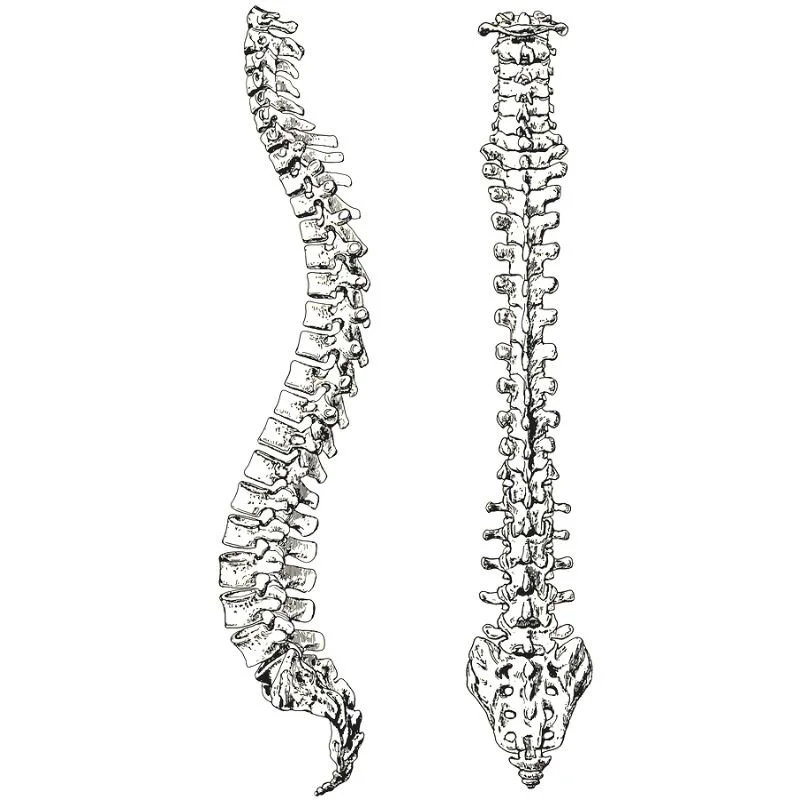This blog post was first sent to Jenni’s email list as an email newsletter. Sign up for the JRY email newsletter here!

Should we have a “flat back” or a rounded spine in navasana (boat pose)? Let’s use movement science to discuss!
Here’s a great question I received:
“I’ve got a burning question about straight spine vs c-curve in boat pose. I do pilates and yoga and have experienced in yoga, instructions for straight spine. Yet in pilates, numerous exercises in boat pose instruct c-curve. If you have a bit of time to please explain why yoga version discourages any curve?… 🤯 Thank you!!”
I love this question! Isn’t it interesting when we see similar shapes taught differently across movement modalities? What’s up with that?
For context, here is a comparison of yoga’s boat pose / navasana and the very similar move taught in Pilates called a teaser.
Yoga’s boat pose / navasana with a “straight,” “neutral” spine:
Boat pose (navasana) as practiced in yoga
Pilates teaser with a rounded, c-curve spine:
The Pilates teaser
As you can see, yoga’s boat pose features a tall, “neutral” spine. And Pilates’ teaser is often performed with a c-curve (rounded/flexed) spine.
Two quick side notes:
-
These are just general tendencies. I’m sure some yoga teachers do teach a rounded spine in navasana, and I also believe that in some Pilates circles, the teaser is taught with a neutral spine!
-
I’m not a Pilates teacher, but I believe that technically, the teaser isn’t usually a position practitioners hold statically like boat pose in yoga.
Instead, the teaser is a sequence of movements in which one starts lying supine and rolls up through their spine into a boat pose position, and then rolls through their spine back down again. However, the upright “V”-shape depicted here ⬆️ is the iconic teaser position people usually picture.
(Pilates teachers who are reading this, please feel free to correct me! 😀)
But let’s return to the subject at hand: why are these two very similar shapes – boat pose and the teaser – taught with different spinal alignments in different movement modalities?
When it comes to the Pilates c-curve version, here’s my understanding. The main reason for this spinal alignment is that this position – of spinal flexion and posterior pelvic tilt – puts our abdominals in a better position to work.
Pilates prioritizes anterior core strengthening, so it makes sense that a c-curve in boat pose might be preferred.
In yoga, this same position is generally taught with an emphasis on a “straight spine,” “neutral spine,” or “lifted chest” as opposed to a c-curve.
In my experience (though others might have different experiences!), this yoga alignment is generally taught for one of two reasons:
-
Aesthetics: a straight spine simply *looks better* to yoga-based eyes because we have an aesthetic bias toward straight lines and right angles in yoga.
-
Outdated beliefs: some (behind-the-times) practitioners think a neutral spine is inherently better or “optimal” alignment, and that a c-curve (spinal flexion) is suboptimal or even “bad” for us. 😐 (Want the current, evidence-based approach to spinal flexion in yoga, Pilates, and movement practices? Get up to speed here!)
So which spinal alignment should you practice or teach in boat pose?
If you’re familiar with my approach to yoga, you probably know this is a trick question! 😉
There’s no one right way because (unsatisfying answer incomiiing)… it depends:
-
If your intention in the moment is simply to practice yoga’s boat pose and embody its straight-line V shape, then a tall, “neutral” spine is a great choice.
-
And if your intention in the moment is specifically to target your abdominal muscles, then a c-curve is a great choice.
So perhaps a better question than “which alignment should I practice” is this: what’s your goal for your boat pose, and which alignment helps better facilitate that goal?
My Personal Yoga Teaching Approach to the Spine in Boat Pose
When I teach or practice boat pose/navasana, I tend not to micromanage spinal alignment. I simply instruct the general shape of the pose and I don’t worry about the details of a few degrees of spinal alignment in either direction.
It’s a different story if I have students lower from boat pose into half boat pose, or ardha navasana, though! Here’s what this pose looks like:
Half boat pose or ardha navasana in yoga
In half boat, I do tend to emphasize a rounded spine because that alignment creates potent work for the anterior core muscles. But that’s a different yoga pose for a different blog post heh heh!
But back to regular boat pose. 🙂 One reason I don’t hyper-focus on spinal alignment in boat pose stems from my understanding of research. Research suggests that when we’re in hip flexion (like we are in boat pose), even if we *try* to embody a neutral spine, our lumbar spine will still flex. This happens whether we want it to or not – it’s unavoidable!
In fact, as a yoga or Pilates teacher, we might perceive someone’s spine as being in a neutral or “flat back” position in movements involving hip flexion, but at a vertebral level, the lumbar spine naturally rounds (Howe & Lehman, 2021). (Read more about this here!)
Because lumbar flexion is an inevitable and natural part of our movement life, it doesn’t do us any good to unnecessarily demonize or try to avoid it, now does it?? 🙂
In general, I prefer to take a “movement optimist” approach and embrace the many possibilities for movement that the spine has!
Now, if a yoga student were experiencing pain or discomfort in boat pose, I might suggest that they explore different alignments (c-curve, “neutral” spine, knees bent, feet on the floor, one foot down/one leg up, etc.) to see if one variation feels better for their body in that moment.
That would be an example of individualizing the alignment of a yoga pose for a specific student. But on a group level, as a general rule, I tend to keep the pose simple and not micromanage it.
Interested in diving into this “neutral” vs. rounded spine topic a bit further? Great news: I have three resources for you!
-
Blog post: Is It Bad to Round Your Spine When Lifting (or in Yoga)?
-
Blog post: When is a Neutral Spine Not a Neutral Spine?
-
Continuing education course on my website: Applied Anatomy for Yogis: The Spine & Core. This 3.25-hr course counts as CE hour with Yoga Alliance, and you can take it for free with the 7-day trial of my Continuing Education membership!


